How to Adapt Trail Activities and Gear for Cold and Winter Conditions
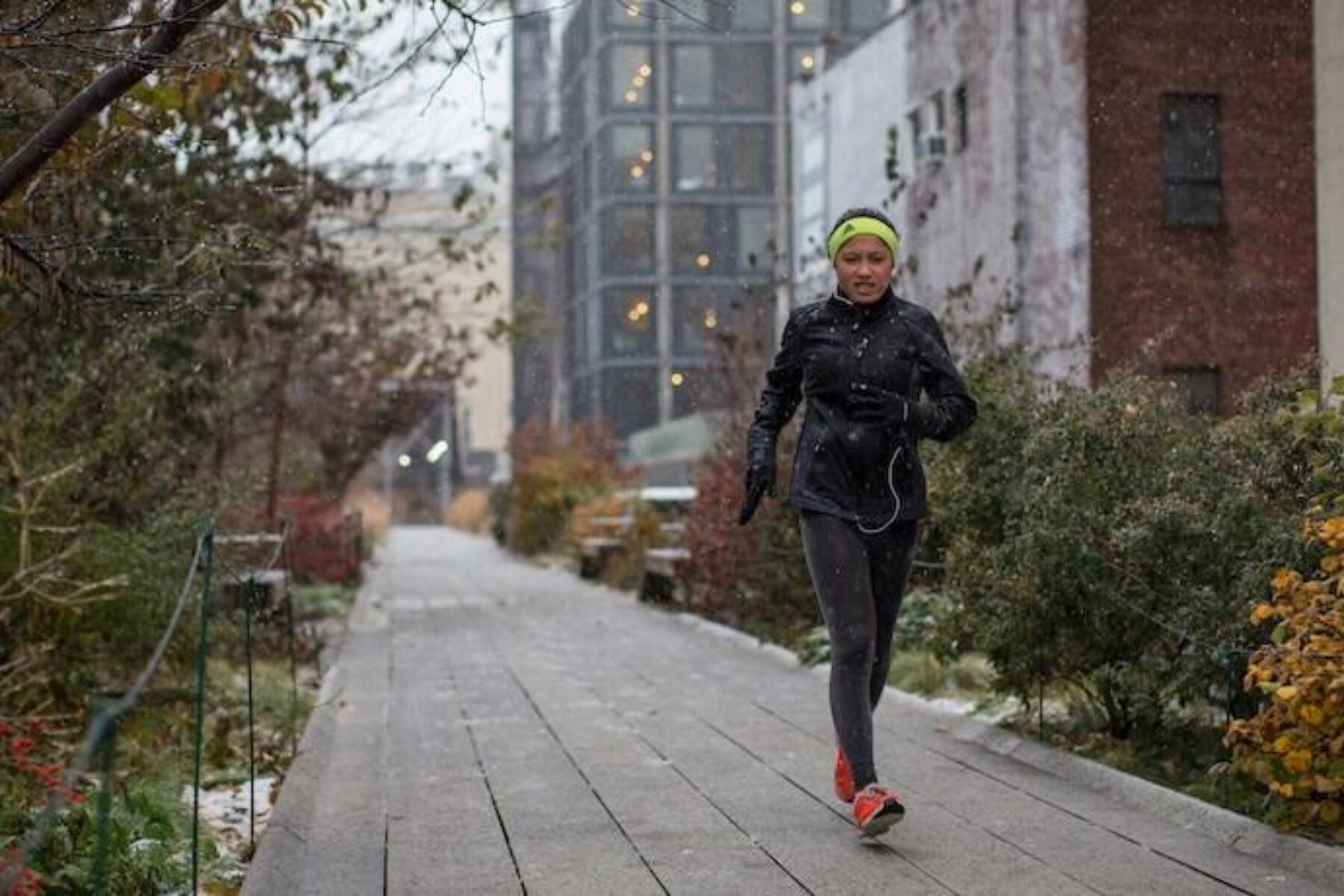
Being active outdoors is not a challenge for many people in the spring and summer, but as the weather gets colder and the days get shorter, some people may be entering uncharted territory as they seek to keep using trails for their physical and mental health.
Of course, common outdoor activities such as walking, hiking, running and cycling can be done safely in the fall and winter, as long as you’re adequately prepared and plan to recreate responsibly. Here are few tips from the experts.
This article was updated on Jan. 7, 2025.
Running (or Walking) in the Fall and Winter
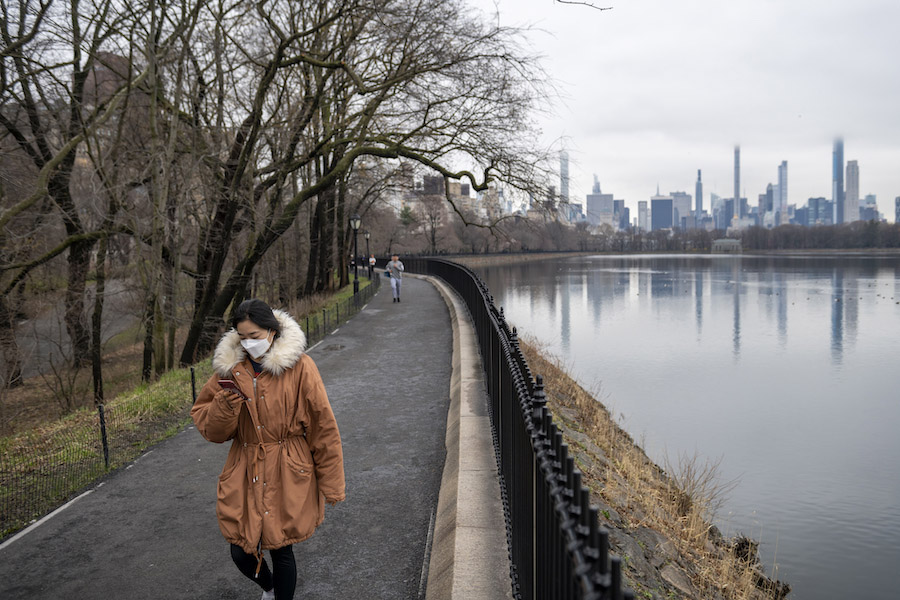
Ask pretty much anyone who’s ever trained for a marathon or half marathon what weather conditions they prefer, and chances are they’ll tell you cooler ones. As a runner living in Houston—which is known for its long, hot and oppressively humid summers—I live for that first touch of fall and have run my best long-distance race times when we’ve been fortunate enough to get race day temperatures below 60 degrees (in my opinion, 40 degrees is ideal).
For someone like me, preparing for colder run days doesn’t require much other than a switch to long sleeves or tights when we see large temperature dips. But if you live farther up north, you’ll definitely want to give it more thought.
According to Rebekah Mayer, a USA Track & Field (USATF) Level 2 coach and wellness advisor at E Squared Health in the Minneapolis area, the amount of clothing you need to stay warm, safe and dry in the late fall and winter depends largely on the climate.
While these tips below are designed for running in mind—they can be adapted to walking as well, with climate and body temperature (walking vs. running) kept in mind.
Dress in Layers
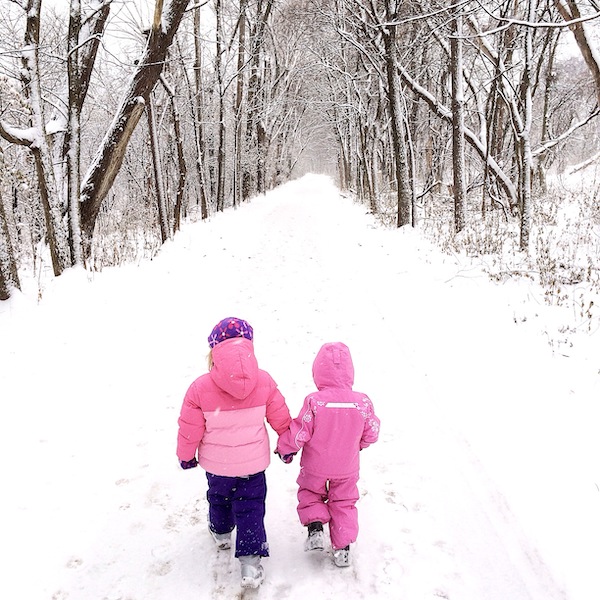
“I recommend dressing in layers when possible, because once you start getting warmed up on a run, it often feels like it’s 20 degrees warmer than it is outside,” she explained. “If you over-dress, you can always pull off a layer, if you have multiple layers on.”
As far as fabrics and materials, Mayer advised that your base layer be made of a wicking synthetic fiber to wick the sweat away from your body, as cotton or natural fibers tend to absorb sweat, which can lead you to experience chills as you continue moving. Depending on the climate you’re in, you may need a thicker but lightweight mid-layer to stay warm, such as fleece. Your outer layer should still be something breathable, especially if you’re on a longer run, she said. However, if you’re on a shorter run in which it’s raining or snowing, you might be better off wearing something less breathable, like a windbreaker or waterproof jacket, to keep moisture from coming in and getting your inner layers wet.
If you live somewhere where winter temperatures tend to dip well below freezing, it is still possible to safely get your miles in outside from a health standpoint, Mayer said. However, that depends on being able to dress appropriately for the temperatures. Mayer herself trains outdoors until it gets to be well below freezing, though she moves her runs to the treadmill if she has a key speed workout on tap, or if the roads and trails are particularly snowy or icy, as these factors can affect the power and stride length needed to run and execute specific paces.
“I would look at zero degrees for a threshold for average recreational runners who have a decent amount of winter gear,” she said. “I personally don’t move well when it’s that cold or physically get as much out of my run as I would on the treadmill, and I can’t run fast outside in the cold or on bad footing.”
Calibrate Footwear and Terrain
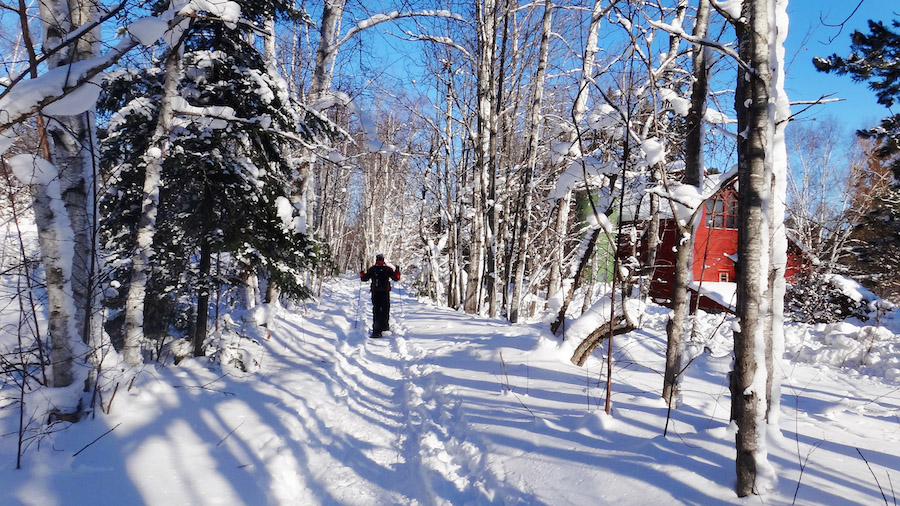
One option for navigating less-than-ideal footing is shoe traction cleats such as Yaktrax, which can help you stay upright when covering packed snow or slick ice, Mayer said. You can also put hex screws into the sole of an older pair of shoes to serve as spikes that can be less intrusive than large attachments like cleats.
“You can put a few around the heel and toe part of the shoe when you’re in thicker rubber; just make sure the screws are short enough that they wouldn’t go all the way through the rubber and the cushioning and into your foot,” she says. “If you’re constantly running on bad footing, and just know you’d rather be outside than inside regardless of the conditions, then it’s probably worthwhile to purchase the cleats.”
It can also be beneficial to choose the terrain you’ll be running on based on conditions and potentially bad footing you may run into, Mayer said. Singletrack trails (mountain biking trails) often aren’t plowed at all, so that’s something to keep in mind as well. A few inches of untouched fresh snow can be fun to run in, but older snow that a lot people have stepped in can be more dangerous, because it’s crusty, and it can be easier to sprain an ankle.
“In my area, gravel trails that were formerly old rail beds are some of my favorite places to run in the winter—when they’ve been plowed—because even if there’s a bit of snow or ice, the gravel underneath provides grippy-ness,” said Mayer. “This is a much better surface option than paved trails that have been plowed, because those tend to have more icy-ness underneath with no grip to help you out.”
Carry Hand Warmers
When running outdoors in extremely cold temperatures, Mayer advises watching out for symptoms of frostbite and hypothermia as signals to move indoors as soon as possible. For frostbite, watch out for whiteness, redness or blisters on exposed areas, as well as localized pain and numbness, even in covered areas like gloved hands. Carrying a hand warmer inside a glove or mitten can help prevent this from happening. For hypothermia, watch out for shivering, confusion, sudden extreme fatigue, drowsiness, fumbling and clumsiness, like you can’t manage or hold anything in your hands.
See and Be Seen
From a safety standpoint, if you’re walking or running when it’s dark out in the early morning or in the evening, it’s important to ensure you can see and are able to be seen, especially if you’re running on roads or trails that aren’t well lit, Mayer said. Headlights are a good option, as are blinking or light-up vests, and reflective clothing.
Stay Hydrated (Even in the Cold)
Finally, don’t forget about hydration in the winter. This can be extra-challenging in colder months, because public outdoor water fountains may be turned off to keep pipes from freezing, and the contents of a hand-held can potentially freeze as well. Mayer recommends a fuel belt or hydration pack under a jacket, as wearing it closer to your body can help prevent freezing. Putting an electrolyte mix in your bottle can be helpful too, as any liquid with higher salt concentration is less likely to freeze.
“Staying hydrated in the winter is still important, because you’re still sweating and breathing out a lot, even if it doesn’t feel like it,” she said. “It depends on what you’re comfortable with, but for most people, a good rule of thumb is to carry water or be prepared to stop for some if you’re running longer than an hour.”
Bicycling in the Fall and Winter
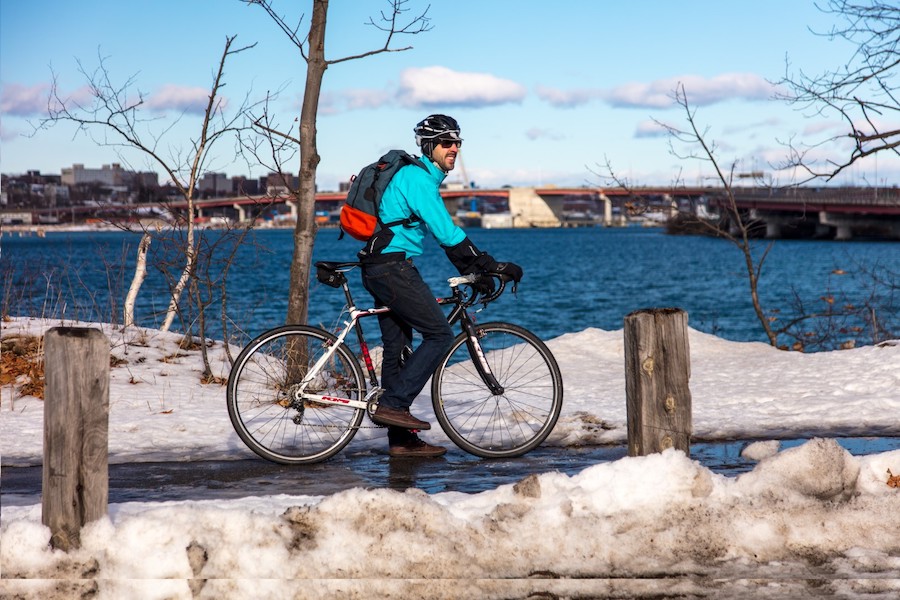
Plan for Changes in Body Temperature
According to Amelia Kegel, a board member for the Wisconsin Bike Fed, and owner and director of marketing and events for the bike shop Wheel & Sprocket, Inc. in Milwaukee, cycling in cooler temperatures is also all about the layers. Her go-to advice: “Don’t change your plans; change your clothes.”
While there is a lot of technical gear that you can purchase to wear on the bike, Kegel stressed that many of us already have clothing and gear that they may use for biking in colder weather.
“Wool, wool blends or affordable synthetics are ideal for base layers, and then you can just build from there,” said Kegel. “Fabrics like cotton aren’t your best bet for staying dry.”
Kegel, who rides year-round, notes that it’s key to watch the weather report—and plan to start out slightly cold so that when you get moving you don’t overheat and begin to sweat and have to remove your layers. It can also be a good idea to wear thinner gloves to allow some heat to escape. Wool socks and boots are ideal for ensuring your feet stay warm, too.
According to Jose Maldonado, vice president of marketing at People for Bikes in Park City, Utah, when it comes to top layers, long-sleeve jerseys and a vest or jacket to wear over your sweat-wicking layers can protect you from winter showers. Accessories such as all-purpose cotton bike caps, thin skull caps, neck gaiters and headbands can also make cold-weather riding more comfortable.
For those who want to ride in colder temperatures or who are sensitive to breathing in cold air, a balaclava or neck gaitor provides maximum coverage for your face and head,” he said.
Knee and leg warmers are optimal with lycra-type riding shorts, and are available in different weights and fabrics. If knee or leg warmers aren’t an option, you can also wear a light knicker or full-length tight with your short of choice on top.
“The only way to really know what will keep you dry and comfortable in the cold is trial and error,” said Kegel. “Biking once a week or multiple times a week will help you go out on days that you wouldn’t normally, and help you really understand what the difference between 30, 40 and 50 degrees feels like.”
Winter-Friendly Gear and Riding Advice
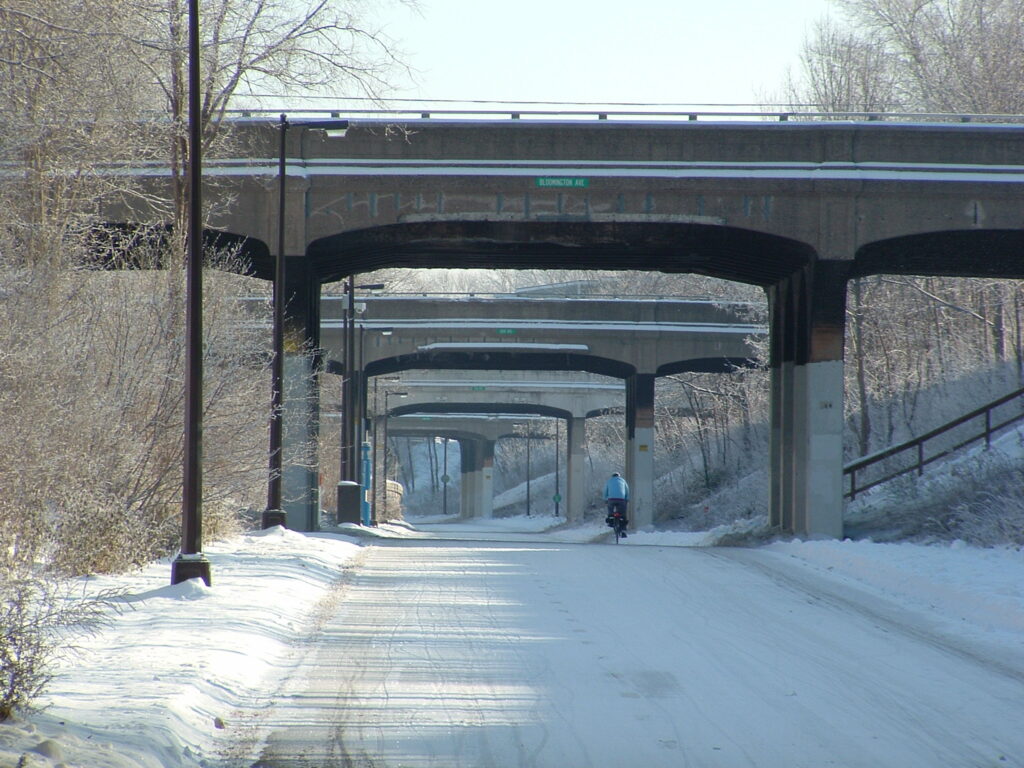
When choosing a bike to ride on trails that can be icy or wet, Kegel recommended opting for something like a gravel bike with thicker tires rather than a road bike with thinner tires that can make riding very slippery.
“These bikes are fast like a road bike but have the tolerance to accommodate a thicker tire,” she explained. “They can also usually ride all season long, are fun in the summer and in the snow, are good on all substrates [surface layers], and can help you feel more stable, even when riding on streets with potholes.”
When conditions do get snowy and icy, Kegel recommended getting studded tires, even if it’s just the front tire (the first place you’ll get impact) if you’re on a budget.
As far as strategy to prevent any spills when cycling in less-than-ideal conditions, Kegel emphasizes staying perpendicular (straight) on your bike when encountering road cracks, railroad tracks or other separations from the pavement.
When it’s dark out, you’ll want to make sure you’re wearing bright and reflective materials to catch car headlights. As far as lights to help yourself see, she recommended a strong front bike headlight with high lumens (high amounts of visible light) that can blink. To be seen by others, you should have a red blinking light on the back of your bike, she said.
“Be predictable. If people can see you, they can give you space, but if it’s a last minute interaction, that’s where a negative exchange with a driver often occurs,” said Kegel.
Finally, if you have any doubt about any aspect of preparing to ride outdoors, Kegel strongly recommends visiting your local bike shop.
“They’re a wealth of knowledge in your community, and chances are, they ride all season long and are happy to talk about all aspects of riding,” she said.
Safe Enjoyment on Trails for People With Disabilities
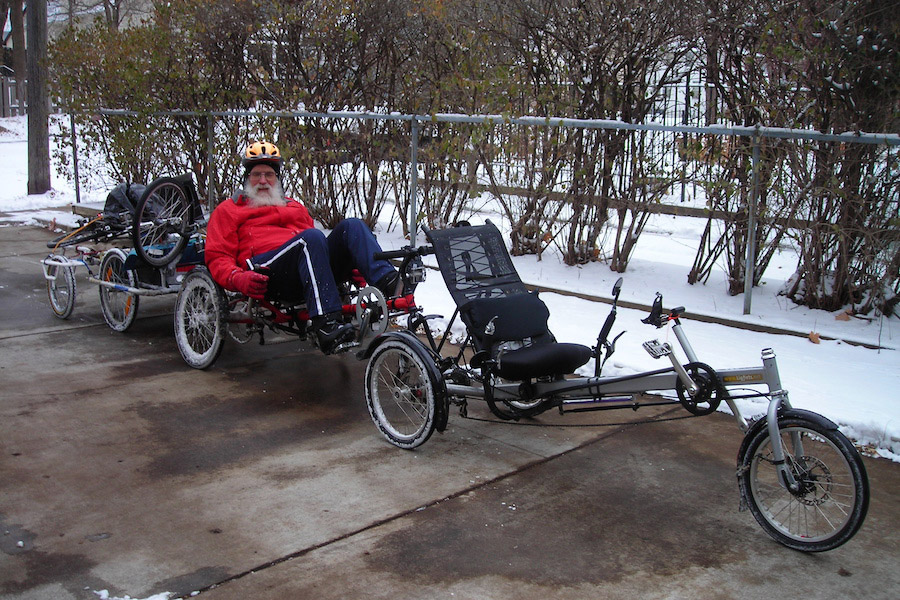
If you or a loved one are living with a disability, advanced planning is of the utmost importance when heading out on the trail in cold and winter conditions.
Ambika Rajyagor co-founded the Disabled & Outdoors Instagram account, after she was inspired by her sister, Devika, who has significant disabilities. The organization is planning to launch its website, DisabledandOutdoors.com, this winter. “Something that’s always frustrated me is the lack of disabled representation in the outdoor community, along with the lack of accessible resources for the disabled outdoor community,” said Rajyagor, who is based in the Los Angeles area.
Research Your Destination
As we go into the winter months, some tips that people should keep in mind are to always be prepared for the weather, meaning to dress warm, pack extra supplies in case of an emergency, and always research the area you’re planning on visiting before you actually go, said Rajyagor.
“Last winter, we took Devika to Bryce Canyon National Park, and since it was very snowy, I called the visitor’s center in advance and spoke with someone on the phone about which trails they’d recommend as disabled-accessible, even in the snow,” she said.
She added, “As a caretaker for my sister, and as a disability rights advocate, I believe that it’s important to always be inclusive when planning your outdoor activities, and to communicate and provide options for your group when there are some activities that may not be completely disabled-accessible.”
Before every trip, Rajyagor plans out areas where she knows for sure that her family can take her sister’s wheelchair with no issues. In addition to contacting the destination’s visitor’s center or other information services department to inquire about accommodations, she researches options that are disabled-friendly.
“If there are places with extremely disappointing accessibility options, like limited disabled parking, no accessible areas, etc., I recommend advocating for the future implementation of those things,” she says.
Further safety precautions depend on the activity, but it’s always wise to be as mindful as possible about what their limits are when it comes to outdoor activity in new climates.
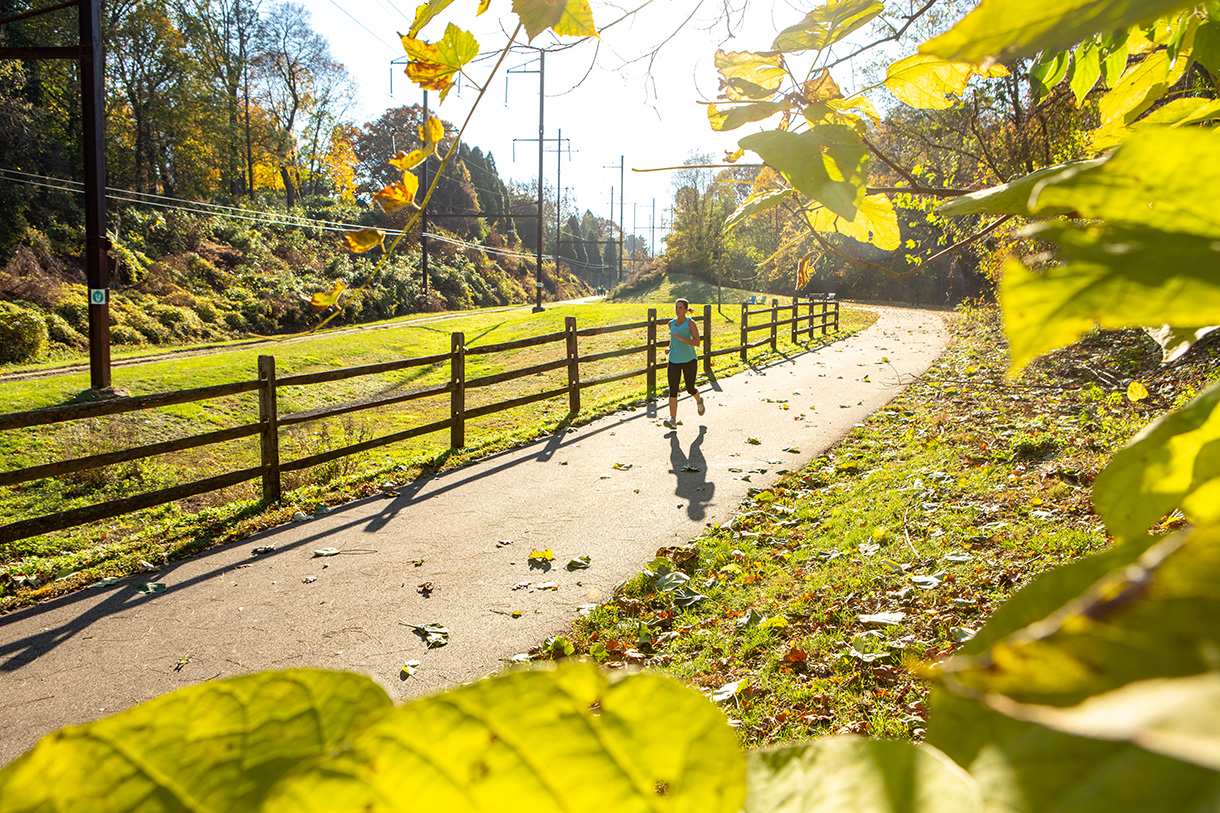
Assisted Gear for Wheelchairs and Walking Aids
“The type of gear you may need would depend on the person’s disability, but if you are a wheelchair user aiming to go on rough terrain, we recommend inquiring about rugged tires for the chair,” affirmed Rajyagor. “There are some wheelchair brands that have these, but we’ve also read about some of our community members going to their local bike-shops and getting their chairs fitted there.”
If you require walking aids, Rajyagor recommends getting slip-proof ends, and if you are trekking on snow, she suggests opting for spikes (micro or crampons).
“This would just be a start, but in addition to this, it’s important to thoroughly do more gear research for your chosen activity — stores such as REIs can be a great resource,” she says.
The Bottom Line
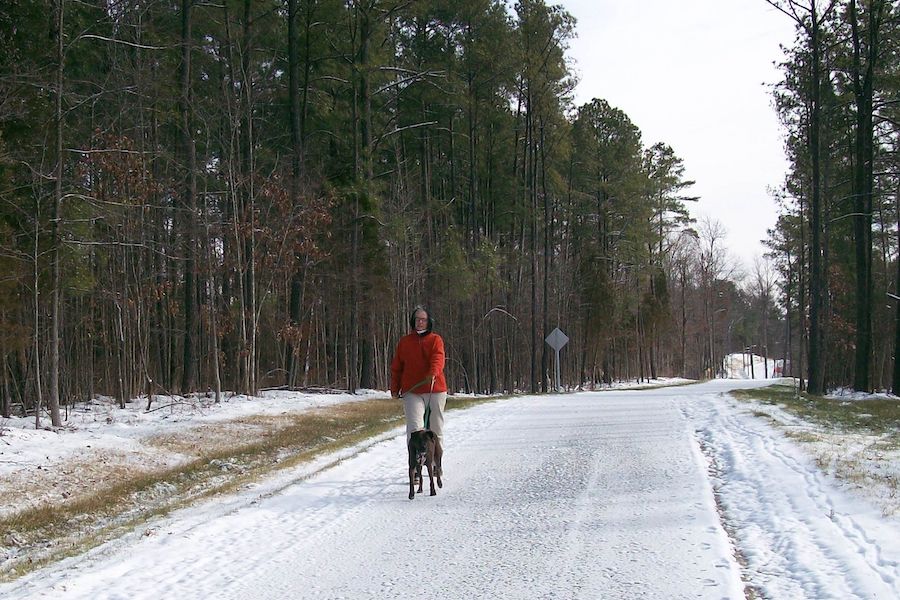
No matter your ability level, it’s possible to actively enjoy the outdoors this winter and fall. Just be sure to plan ahead—and do your research—with health and safety in mind for all parties involved.
Winter Trail Tips
- Wintertime Trail Fun
- Winter “Share the Trail” Etiquette and Safety Tips
- Seven Hot Tips for Cold-Weather Biking / Siete buenos consejos para andar en bicicleta en climas fríos
- Rail-Trail Tips for Cross-Country Skiing (A 101 Guide) / Consejos para senderos ferroviarios para esquí de fondo (una guía 101)
- The Magical World of Snowshoeing: A How-To Guide for Trails) / El mágico mundo de las raquetas de nieve: una guía práctica para senderos
- How to Adapt Trail Activities and Gear for Cold and Winter Conditions
- 10 Rail-Trail Winter Wonderlands

Donate
Everyone deserves access to safe ways to walk, bike, and be active outdoors.